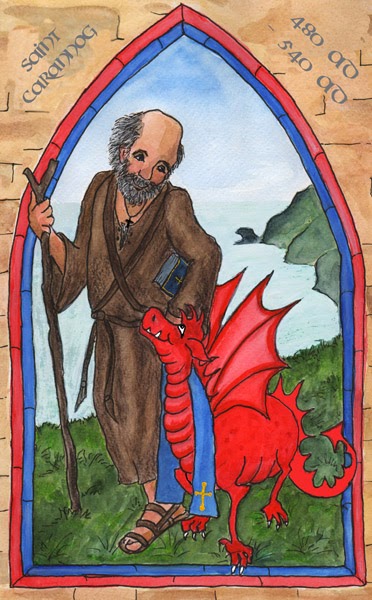When I took my ‘O’ level exams, aged 15, I made the classic mistake of not reading one of the questions on the Geography paper properly.
So I wrote a well-argued essay that constituted one-third of the marks for the Regional Geography exam on ‘Why there are no sheep in Wales’.

As well as that obviously glaring misapprehension, I grew up believing that all Welsh people were 'not very bright', decidedly unfriendly and that most of them were called Taffy.
Prejudice can be a powerful thing and my mother was certainly prejudiced when it came to the Welsh. I've no idea why!
But as a result, I had no real interest in visiting Wales until my eldest daughter’s love of horses and horse-riding led us to book a family holiday in Wales that included pony trekking.

My first surprise, as we travelled westwards across South and Mid-Wales was that Wales was full of sheep!
I’ve heard since that in Wales, sheep outnumber humans by three to one.
My second surprise, of course, was the lovely warm welcome we were given in Wales, the absence of anyone called Taffy, and, as far as we could tell, no greater stupidity in evidence than anywhere else!
And the scenery was so breathtaking I could hardly stop taking photos even though this was well before the age of the digital camera!
While our pony-loving daughter was out trekking, we took her toddler sister to the coast and the first place we discovered was a tiny hamlet called Llangrannog, overlooking a pretty little bay.
So maybe that’s why, when asked to choose a Welsh Saint to illustrate to raise funds for this year's Los Angeles St David’s Day festivities, I chose the 6th Century Saint Carannog. He is said to have built his church here and there is a statue of him on the cliff-top, overlooking the bay.
Or maybe it was because there was a dragon involved and I can’t resist drawing dragons.
In fact all the stories of the Welsh Saints are quite dramatic and bloodthirsty, with plenty of scope for illustration – a common theme being heads chopped off and then miraculously restored. Of course some of these embellishments are most probably metaphorical.
St Carannog succeeded in taming the dragon without any shedding of blood and so the story ends happily.
I wonder what next year’s assignment will be!




1 comment:
Great story and true for many of us who don't know why we dislike somethings. Your sheep looks so happy, I love them.
Post a Comment